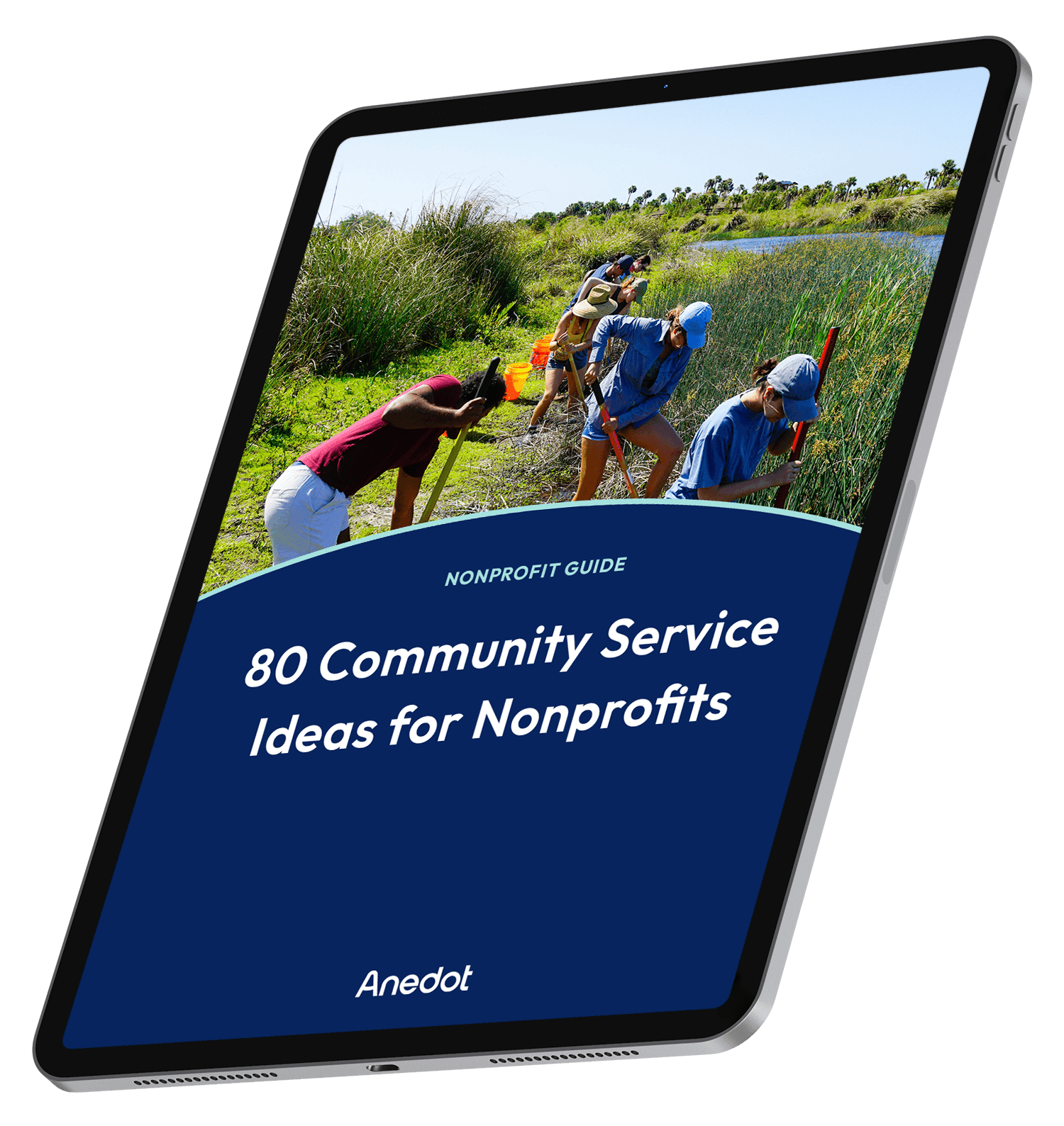Fiscal sponsorship can deliver tremendous solutions to nonprofits and the causes they sponsor, helping both achieve various goals.
But the path to effective fiscal sponsorship requires an understanding of the process including potential pitfalls and best practices.
In this post, we cover both. Read on to learn the ins and out of optimum fiscal sponsorship for nonprofits.
What is fiscal sponsorship, and how does it work?

A fiscal sponsorship arrangement helps a cause attract donors even if it’s not a tax-exempt 501(c)(3).
The fiscal sponsor is a nonprofit organization that provides fiduciary oversight, financial management, and other services that help support and strengthen the project it sponsors.
A financial sponsor takes on many roles, including administrative functions and receiving and disbursing donations. Some fiscal sponsors carry out the day-to-day work of the causes they support.
The sponsoring nonprofit receives many benefits associated with fiscal sponsorship.
It’s an effective way to cultivate partnerships with like-minded causes and grow the sponsor’s support base.
Nonprofits must enter into a fiscal sponsorship agreement understanding the role's risks, benefits, and best practices.
Below we explore them all.
Essential fiscal sponsorship best practices for nonprofits

Nonprofit fiscal sponsors must know - and implement - best practices to see the most return for their resource investment.
Below we explore essential fiscal sponsorship practices for nonprofits entering the role.
1. Determine shared expectations
Before entering a formal agreement as a fiscal sponsor, determine expectations for your nonprofit and the beneficiary.
Managing expectations promotes a positive and productive relationship that helps both parties work together to achieve the project goals.
Below are a few standard expectations you should evaluate and discuss together:
- Services provided by the sponsor
- Sponsor fees
- Timeline of sponsorship
- Means by which services are provided
Keep your expectations clear and measurable. There should be no room - or need - for interpretation.
Once everyone can agree upon expectations, you can put a plan in writing.
2. Create a fiscal sponsorship agreement
A formal, written, sponsorship agreement ensures all parties understand and agree to the specifics of the partnership.
The document should include the following:
- Sponsor responsibilities, including receiving and reporting donations
- Administrative fees
- Beneficiary responsibilities, including records to be kept during the partnership
- Expected goals
- Duration of the sponsorship
Fiscal sponsorship agreements help set expectations, prevent potential conflicts, and can help ensure all responsibilities are accounted for and assigned to the appropriate parties.
3. Communicate clearly and frequently
Communicating is essential in any partnership, especially within a fiscal sponsorship relationship.
The sponsor and beneficiary should understand their roles and responsibilities from the beginning, primarily their legal and tax requirements.
Regular communication ensures that both entities work together to fulfill their purposes within the agreement.
4. Set the right fee structure
If your nonprofit acts as a fiscal sponsor, you must determine your fee structure.
Your time, expertise, energy, and resources are valuable, and there will be costs to providing fiscal sponsorship.
Set a fee structure that provides appropriate compensation for all you contribute to the project.
5. Plan for the end
All fiscal sponsorships will come to an end. But many nonprofits in the sponsor position don’t plan to end the partnership.
Determine the goals for your sponsorship and what metrics both parties will use to measure the success and duration of the project.
You can outline these details in your fiscal sponsorship agreement.
In the best cases, a project becomes self-sufficient and no longer needs fiscal sponsorship.
Other times, a project must end due to a lack of support or a directional change. A project might determine a different fiscal sponsor is a better fit.
Understand that your fiscal sponsorship will end at some point. Create a plan so both parties can know how to prepare and what it looks like to end the formal relationship.
Risks for nonprofits acting as a fiscal sponsor

The nonprofit’s board must know potential risks when entering a fiscal sponsorship arrangement.
By being aware of risks, nonprofits can proactively avoid pitfalls and see that their nonprofit and the cause they sponsor benefit from the partnership.
1. Mission drift
Organizations serving as fiscal sponsors should approach the arrangement with a clear vision of how the role will advance their mission.
In the early conversations surrounding fiscal sponsorship opportunities, ask yourself how this position will help your nonprofit reach its goals and continue its work.
When you partner with a cause to be its fiscal sponsor, you must ensure you operate within your mission.
You could violate your governing documents or charitable trust principles if you don’t.
2. Reputation
As a nonprofit, maintaining your reputation is crucial for donor retention and advocate support. You must do whatever it takes to protect it.
Your fiscal sponsorship relationships will affect your organization’s reputation - for better or worse.
Aligning yourself with the right cause to sponsor can help you increase your reach and bolster your reputation.
However, a problematic project that opposes your nonprofit’s values can have long-lasting, damaging effects.
Sponsoring a cause with values or goals against your own communicates hypocrisy and a lack of integrity and consistency.
Backing the wrong cause - or even a single project or event - can ruin your organization’s reputation.
3. Liabilities
When a nonprofit becomes a fiscal sponsor, it takes responsibility for activities put on or conducted by the beneficiary.
The sponsor must ensure that all activities follow applicable laws.
If an individual is injured or harmed participating in an event or activity organized by the beneficiary, the fiscal sponsor is legally the liable party.
The nonprofit sponsor must have the appropriate licenses, permits, and insurance to sponsor projects safely and legally.
Not doing so puts the sponsor at risk for liability should an accident occur.
4. Project directors
Appointing project directors is a significant role of the fiscal sponsor.
The sponsor must choose a director who can effectively lead, operate, manage, and raise funds for the project.
Project directors should be thoroughly - even meticulously - vetted by the sponsoring organization.
Sponsors should vet potential directors as they would for an internal leadership position, including interviews, background checks, and references.
Remember, a project director guides the beneficiary cause. They need more than a vision and passion. The right project director should have expertise and experience that proves they’re up to the task.
Choosing an inexperienced, ineffective director can lead to failed projects, broken trust, and your support base to take their resources elsewhere.
Consult with legal counsel

Fiscal sponsorship requires passion, vision, and a strong work ethic to see projects through.
But there can also be a significant amount of red tape for sponsors to wade through.
Sponsorships done right require comprehensive grant models and extensive written agreements. They can also complicate your tax paperwork.
For these reasons - plus some - all nonprofits entering a fiscal sponsorship role should consult with legal counsel before formally committing to the partnership.
A legal or accounting professional can help you understand how fiscal sponsorship will affect your organization and if it’s a wise choice for your nonprofit.
Anedot and nonprofit fiscal sponsors

Fiscal sponsorship can be a powerful tool for both the sponsoring organization and the beneficiary.
Anedot has the tools and resources nonprofits need for efficient, effective gift collection.
Reach out today to learn how your nonprofit can save time and money with powerful giving tools!
Note: This summary presented in this article is not a substitute for, nor does it constitute, legal counsel.

80 Community Service Ideas for Nonprofits





















